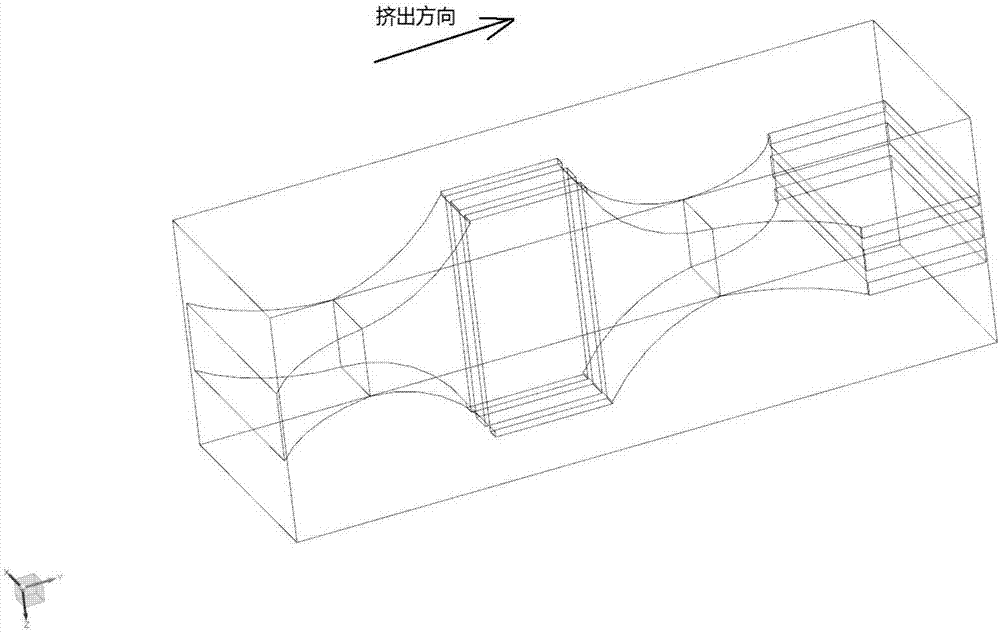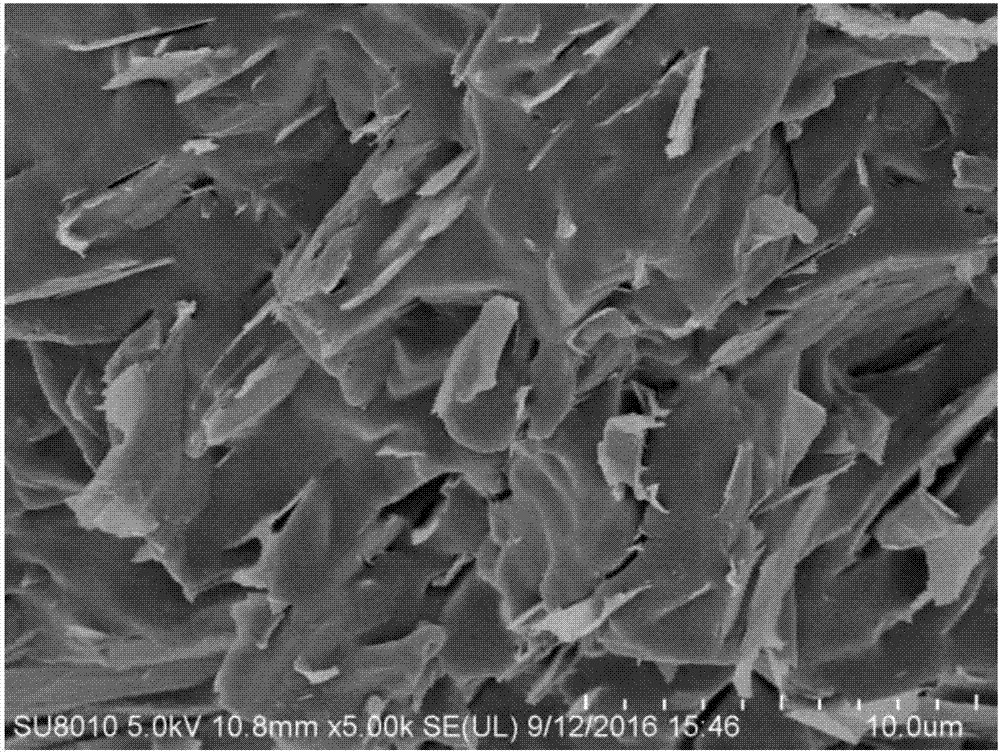Peeling method of graphene nanoplatelets and application
A technology of graphene microflakes and acrylonitrile, which is applied in the field of exfoliation of graphene microflakes, can solve problems such as poor dispersion effect of graphene microflakes, achieve the effect of increasing the degree of exfoliation, improving the dispersion effect, and improving product performance
- Summary
- Abstract
- Description
- Claims
- Application Information
AI Technical Summary
Problems solved by technology
Method used
Image
Examples
Embodiment 1
[0051] (1) Evenly drop 7.4g of A151 silane coupling agent into 240g of graphene microflakes, stir evenly, and then mix it with 1760g of polypropylene (PP) in a high-speed mixer at 70°C for 5min to obtain a reaction mixture;
[0052] (2) The reaction mixture obtained in step (1) is accurately fed into a twin-screw extruder with a screw diameter of 35 mm, a length-to-diameter ratio of 40:1, and 16 kneading blocks and 5 toothed discs with a feeding device. Melt blending with high shear and high residence time (shear stress is 0.16MPa~0.2MPa, residence time is 400s~600s), the screw speed is 200rpm, the temperature in each zone is between 160°C and 210°C, and finally the After shearing, extrude with a biaxial tensile force field to complete the peeling of the graphene microflakes; the obtained sheet is the graphene microflake / PP composite material.
[0053] The scanning electron microscope figure of the graphene microchip / PP composite material that embodiment 1 provides is as im...
Embodiment 2
[0062] (1) 5.6g of the silane coupling agent of KH560 is evenly dropped into 180g of graphene microchips, stirred evenly, and then mixed with 1820g of acrylonitrile-butadiene-styrene copolymer (ABS) in a high-speed mixer Mix at 80°C for 10 minutes to obtain a reaction mixture;
[0063] (2) The reaction mixture obtained in step (1) is accurately fed into a twin-screw extruder with a screw diameter of 35mm, a length-to-diameter ratio of 40:1, 15 kneading blocks and 6 toothed discs with a feeding device. Melt blending with high shear and high residence time (shear stress is 0.16MPa~0.2MPa, residence time is 400s~600s), the screw speed is 100rpm, the temperature in each zone is between 170°C and 220°C, and finally the After shearing, extrude with a biaxial tensile force field to complete the peeling of the graphene micro-sheets; the obtained sheet is the graphene micro-sheet / ABS composite material.
[0064] Adopt the test method that embodiment 1 provides to test the Graphene mic...
Embodiment 3
[0066] (1) Evenly drop 6.2g titanate coupling agent into 200g graphene microchips, stir evenly, then mix it with 1800g polypropylene (PP) in a high-speed mixer at 70°C for 10min to obtain a reaction mixture;
[0067] (2) The reaction mixture obtained in step (1) is accurately fed into a twin-screw extruder with a screw diameter of 35mm, a length-to-diameter ratio of 40:1, and 13 kneading blocks and 5 toothed discs with a feeding device. Melt blending with high shear and high residence time (shear stress is 0.14MPa~0.16MPa, residence time is 250s~450s), screw speed is 300rpm, temperature in each zone is between 150°C and 200°C. After shearing, extrude with a biaxial tensile force field to complete the peeling of the graphene microflakes; the obtained sheet is the graphene microflake / PP composite material.
[0068] Adopt the test method that embodiment 1 provides to test the Graphene microflake / PP composite material that embodiment 3 obtains, the result shows, the conductivity o...
PUM
| Property | Measurement | Unit |
|---|---|---|
| Conductivity | aaaaa | aaaaa |
| Thermal conductivity | aaaaa | aaaaa |
| Tensile strength | aaaaa | aaaaa |
Abstract
Description
Claims
Application Information
 Login to View More
Login to View More - R&D
- Intellectual Property
- Life Sciences
- Materials
- Tech Scout
- Unparalleled Data Quality
- Higher Quality Content
- 60% Fewer Hallucinations
Browse by: Latest US Patents, China's latest patents, Technical Efficacy Thesaurus, Application Domain, Technology Topic, Popular Technical Reports.
© 2025 PatSnap. All rights reserved.Legal|Privacy policy|Modern Slavery Act Transparency Statement|Sitemap|About US| Contact US: help@patsnap.com



